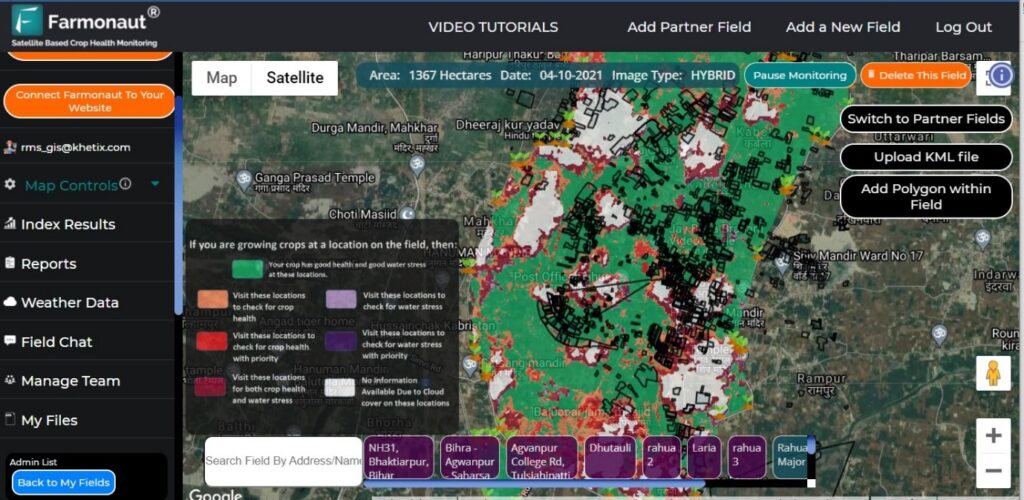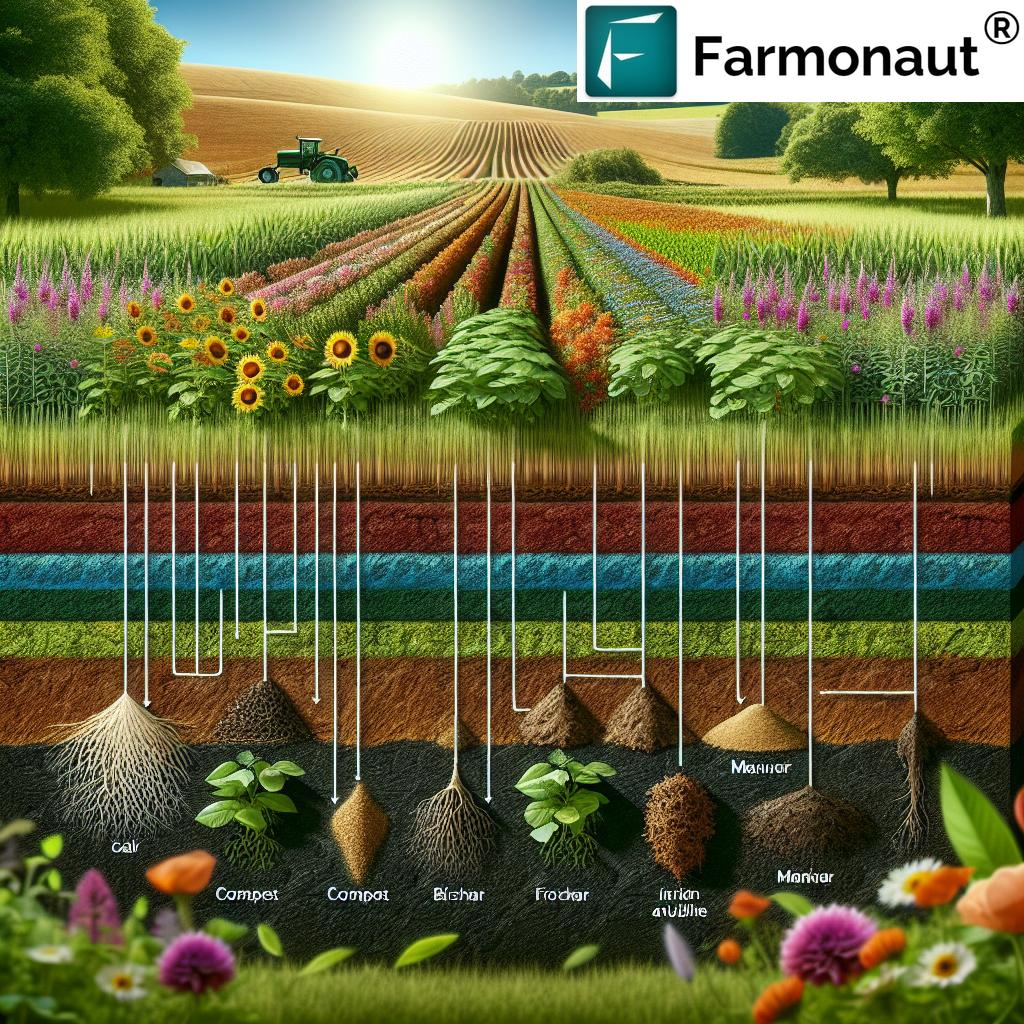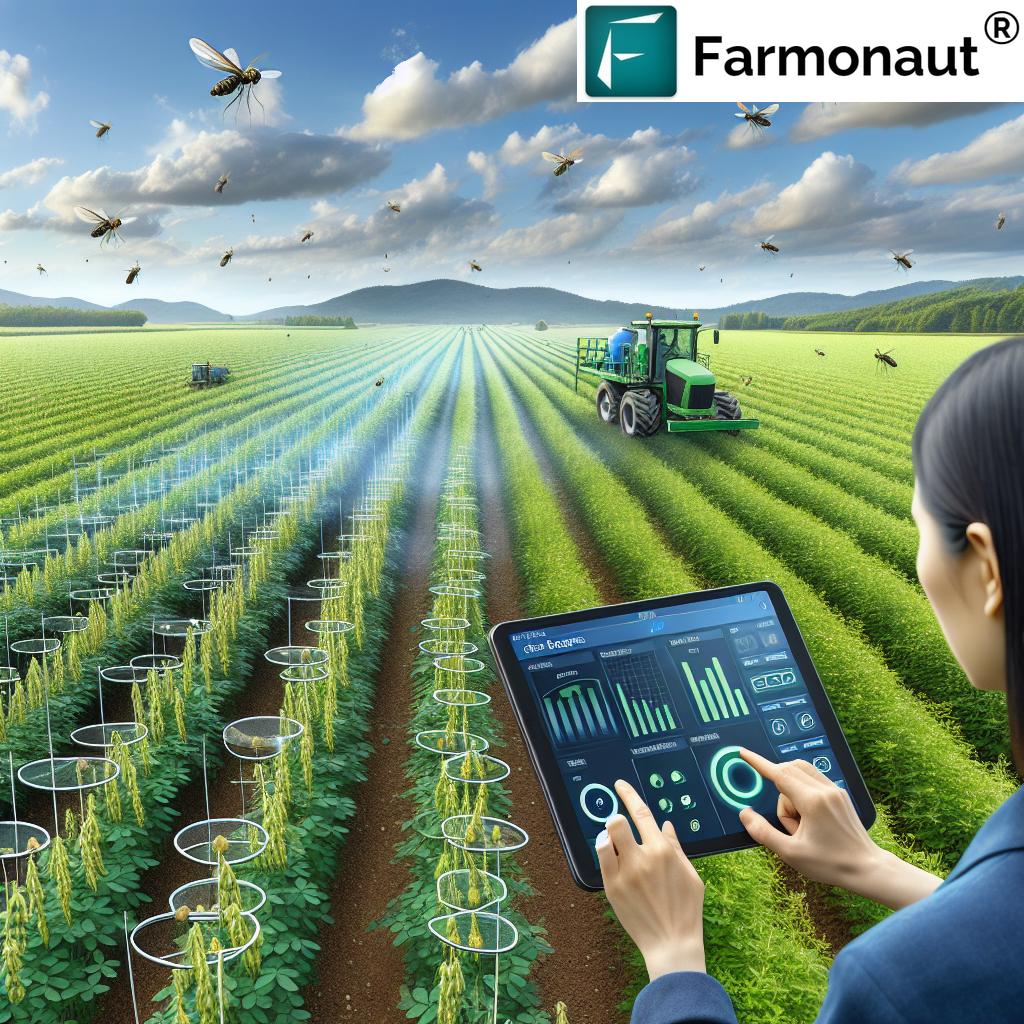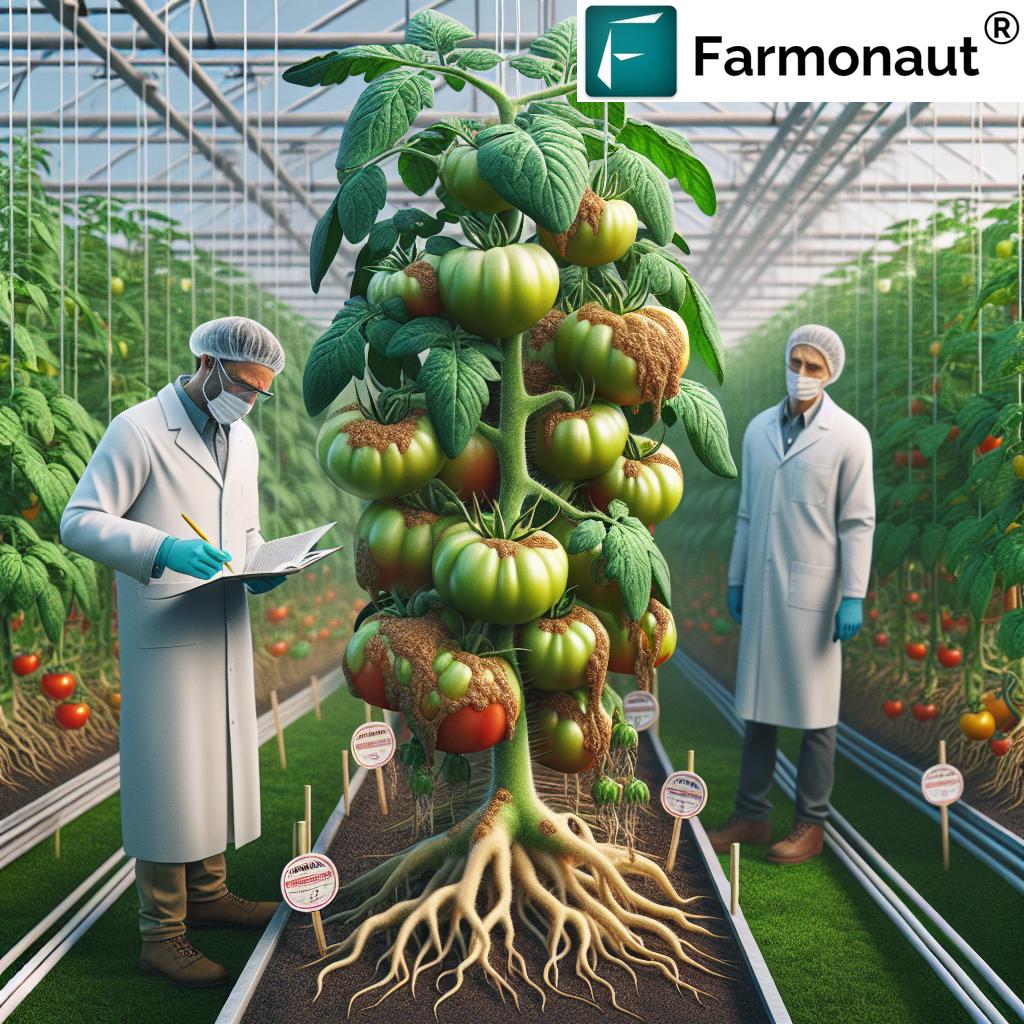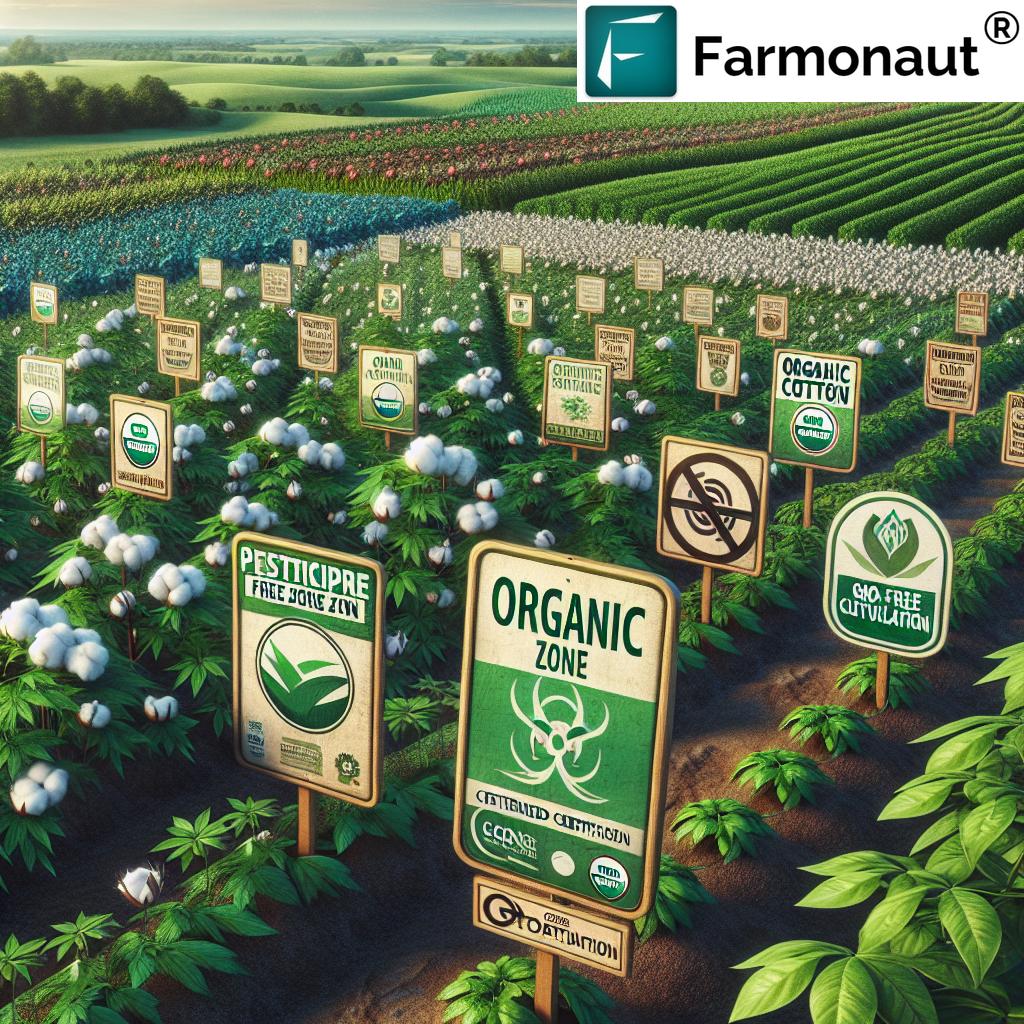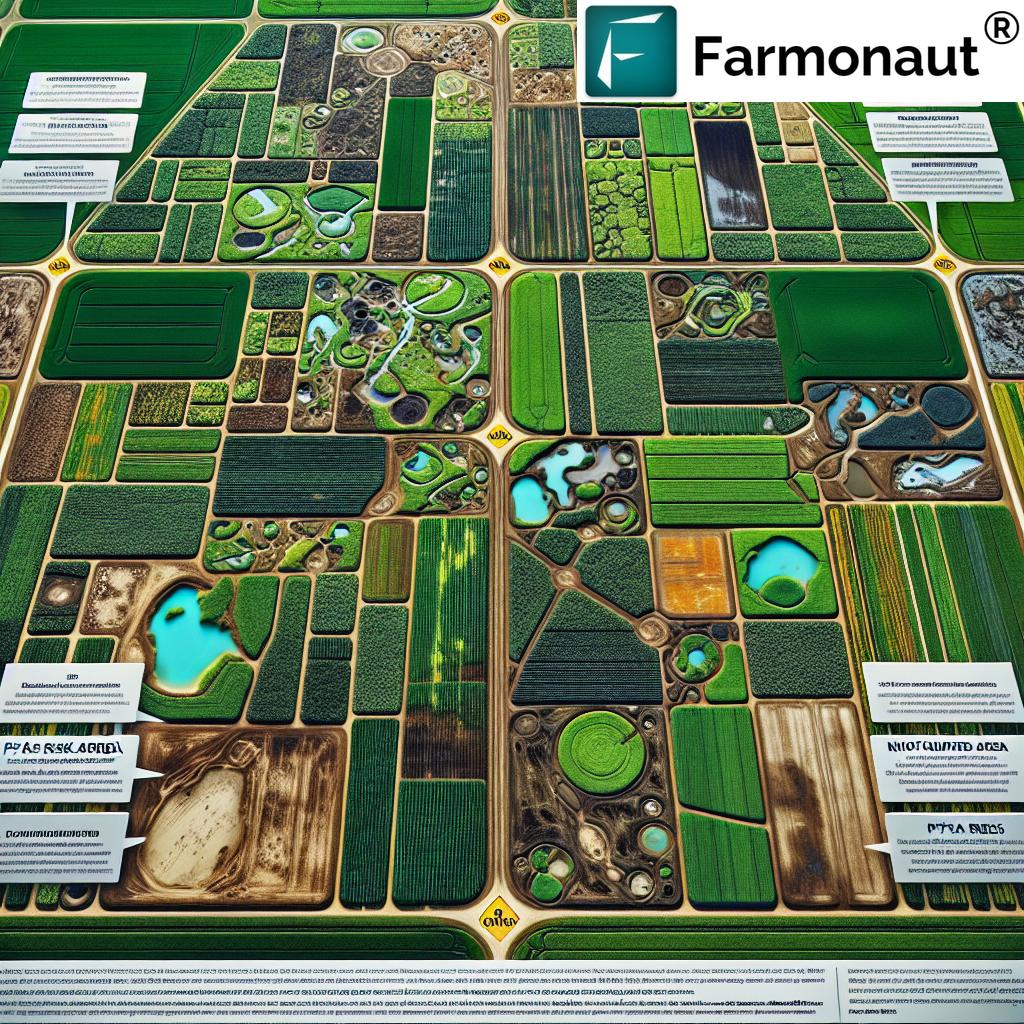Farm Planning Secrets: Double Your Profit Fast!
Table of Contents
- Introduction: The Power of Farm Planning
- Vision and Goal Setting for Farm Success
- Resource Assessment: Laying the Groundwork
- Soil Health Management and Land Planning
- Water Resource Management Strategies
- Crop and Livestock Planning for Profit
- Integrated Pest Management (IPM) for Sustainable Agriculture
- Financial Planning for Farmers
- Agricultural Risk Management and Adaptation
- Succession Planning for Future-Proofing Farms
- Continuous Improvement and Adaptation
- How Farmonaut Empowers Farm Planning
- Comparative Practices and Impact Table
- FAQ: Farm Planning for Profit & Sustainability
- Conclusion: Start Planning, Start Profiting
Introduction: The Power of Farm Planning
Farm planning stands at the heart of modern, profitable, and sustainable agriculture. By strategizing resources and adapting to changing conditions, we can transform the way we manage soil health, water resources, and every aspect of our operations. Today, tools such as Farmonaut’s satellite-based management platform combine the best of technology with proven agricultural practices, enabling us to maximize productivity, improve profitability, and enhance sustainability.
In this comprehensive guide, we’ll reveal the top secrets to effective farm planning, from vision-setting and soil management to water-saving techniques and smart financial plans. Discover why investing in the right planning and technology today can help double your farm profits—fast!
Vision and Goal Setting for Farm Success
Every productive agricultural operation—whether focused on crop production, livestock, or agroforestry—starts with a vision. Our farm planning journey should begin by defining clear, specific goals. What do we want to achieve in the next season? Five years from now? Are we aiming for higher yields, greater income, long-term sustainability, market expansion, or environmental impact?
- Clarify your mission: Is our farm’s main purpose high-value crop production, organic farming, mixed-livestock operations, or land stewardship through agroforestry?
- Set measurable objectives: Target percentage growth in yields, reduction in input costs, or farm carbon footprint reduction.
- Use SMART goals: Specific, Measurable, Achievable, Relevant, and Time-bound.
- Review regularly: At least once per season, revisit goals. As weather patterns, market conditions, and resource levels shift, our goals—and plans—must adapt.
Strategic goal setting is the foundation of every robust farm planning process. As we proceed, aligning every decision and investment with these targets drives productivity improvement and resilience.
Resource Assessment: Laying the Groundwork
A precise understanding of farm resources is the next critical step. Skipping this leads to misallocated investments, poor yields, and missed profitability. We recommend a systematic resource assessment, covering the following:
- Soil Health: Regular soil testing (moisture, nutrient levels, pH, structure) is essential. Use digital tools like Farmonaut’s satellite imagery for continual monitoring and early issue detection.
- Water Resources: Map water supply, storage capacity, and irrigation systems.
- Infrastructure: Evaluate machinery, storage, fencing, housing (for livestock), and digital management systems.
- Financial Assets: Document budgets, loans, grants, and contingency funds.
- Human Capital: Assess available labor force, expertise, and skill sets.
We can double our profit by ensuring every asset is optimally allocated and all gaps are identified early, allowing for targeted investment and continuous improvement in farm management.
Soil Health Management and Land Planning
Soil health management is undeniably the backbone of high-output, sustainable farm planning. Our focus on soil translates directly into plant growth, yields, nutrient availability, and long-term environmental outcomes.
Key Soil Management Secrets:
- Regular Soil Testing: Monitor pH, micro- and macro-nutrient levels, and soil moisture. By integrating Farmonaut’s satellite monitoring, we enable early detection of deficiencies or irrigation needs, saving both resources and crops.
- Soil Structure Enhancement: Minimize tillage to reduce erosion, conserve moisture, and enhance soil biota.
- Crop Rotation Plans: Employ planned rotation cycles (legumes, cereals, root crops) to prevent pests, maintain fertility, and restore nutrient balance—drastically boosting productivity and reducing chemical dependency.
- Cover Crops: Use winter rye, clover, or vetch as cover crops to fix nitrogen, suppress weeds, and prevent nutrient runoff.
- Organic Amendments: Integrate compost, green manures, or animal byproducts to build resilient soils over time.
Want to monitor your soil, crop, and nutrient status remotely? Start using Farmonaut’s App for satellite-backed soil health management.
Land Use Planning and Agroforestry
Integrating agroforestry, buffer strips, and managed pasture rotation enriches soils, increases biodiversity, and provides alternative income streams. Our land plan should maximize both immediate crop/livestock returns and long-term land value.
Carbon footprint tracking is increasingly vital in sustainable farming. By using dedicated carbon footprinting tools from Farmonaut, we reduce emissions and demonstrate eco-responsibility while optimizing resource use. Learn more about Farmonaut’s Carbon Footprinting service.
Water Resource Management Strategies
Efficient water resource management is indispensable for plant health and farm productivity improvement. Whether in drought-prone areas or regions of seasonal abundance, every drop counts.
Top Water Management Techniques:
- Drip Irrigation Systems: Implement targeted irrigation that delivers water exactly where and when crops need it—minimizing wastage, reducing costs, and boosting yields.
- Rainwater Harvesting: Install collection structures to store and supply supplemental water for critical periods.
- Soil Moisture Monitoring: Leverage Farmonaut’s real-time satellite-based soil moisture tracking to know precisely when irrigation is required.
- Irrigation Scheduling: Use scheduling tools to automate irrigation cycles, matching water supply with crop demand and growth stages.
- Diversified Water Sources: Tap into ponds, wells, and municipal water as backups to buffer risks.
Reduce your resource wastage and unlock at least 20% more profitability by optimizing irrigation and water conservation measures.
Looking to monitor your farm’s water use or automate irrigation? Get started with Farmonaut’s Water Resource Management Tools—accessible via web, iOS, and Android.
Crop and Livestock Planning for Profit
A winning farm plan harmonizes both crop selection and livestock management for scalable, year-round income. Striking the right balance, grounded in market research and resource assessment, is essential.
Strategic Crop Planning:
- Market Analysis: Track regional and global trends. What is in demand—grains, oilseeds, organic produce?
- Variety Selection: Pick resilient, high-yielding, disease-resistant crops suited to local climate and soil.
- Seasonal Scheduling: Use precise sowing and harvesting schedules to maximize field use and reduce downtime.
- Diversification: Integrate specialty crops, vegetables, or medicinal plants for added market value.
Smart Livestock Planning:
- Breed Selection: Choose breeds adapted to your climate, feed resources, and local market preferences.
- Rotational Grazing: Enrich pastures by rotating grazing patterns, protecting soil, and maximizing forage use.
- Health Management: Use digital management systems to monitor vaccinations, disease outbreaks, and nutrition.
- Integration: Blend agroforestry and grazing for environmental and economic synergies.
With a comprehensive crop and livestock planning process, supported by satellite monitoring, we can lower risks, stabilize returns, and consistently outperform fragmented operations.
Leverage Farmonaut’s Crop Plantation & Forest Advisory Tech for planning diverse plantation, monitoring forest health, and optimizing intercropping models. Find out more and download the app.
Integrated Pest Management (IPM) for Sustainable Agriculture
No farm plan is complete without proactive strategies for pest and disease management. Implementing integrated pest management (IPM) not only preserves yields, but also fosters environmental stewardship and resource efficiency.
Essential Pillars of IPM:
- Pest Monitoring: Employ visual scouting, traps, and satellite-based alerts from Farmonaut’s monitoring platform to identify outbreaks early.
- Biological Controls: Release beneficial insects or use microbes to outcompete harmful species.
- Cultural Practices: Rotate crops, vary planting dates, and use resistant varieties.
- Judicious Chemical Control: Only as a last resort; apply non-persistent and targeted formulations based on real monitoring data.
- Continuous Education: Stay updated on pest life cycles, migration, and local emergence patterns.
Farmonaut’s AI-powered advisory system delivers real-time pest alerts and management tips on your smartphone or web dashboard. This reduces crop loss, cuts unnecessary chemical spend, and supports healthier farming systems.
Access personalized IPM solutions on Android, iOS, and web via Farmonaut.
Comparative Practices and Impact Table: Conventional vs. Sustainable Farm Planning
| Practice Type | Farm Planning Aspect | Estimated Yield Increase (%) | Estimated Cost Reduction (%) | Environmental Impact | Profitability Increase (%) |
|---|---|---|---|---|---|
| Conventional | Monoculture, minimal rotation | Baseline | Baseline | Soil depletion, high input use | 0–10 |
| Sustainable | Crop Rotation Plans, diversified species | 20–35 | 12–20 | Soil restoration, less pest/disease pressure | 30–50 |
| Conventional | Annual tillage, synthetic-only fertilization | Baseline | Baseline | Erosion, runoff, declining organic matter | 0–10 |
| Sustainable | Soil Health Management: cover crops, organic inputs | 25–40 | 18–25 | Improved structure, carbon sequestration | 35–60 |
| Conventional | Flood irrigation, no moisture monitoring | Baseline | Baseline | Water waste, soil salinity buildup | 0–8 |
| Sustainable | Water Resource Management: drip, scheduling | 15–28 | 10–18 | Efficiency, drought resilience | 18–35 |
| Conventional | Reactive pest control | Baseline | Baseline | High chemical input, resistance | 0–10 |
| Sustainable | Integrated Pest Management (IPM) | 18–24 | 12–22 | Targeted applications, ecosystem balance | 18–22 |
Financial Planning for Farmers
Robust financial planning is the lifeline of every successful farm planning strategy. It’s vital for sustaining operations through tough seasons, seizing new opportunities, and achieving healthy profit margins.
Steps for Solid Financial Planning:
- Budgeting: Outline expected income from all enterprise segments (crops, livestock, agroforestry). Itemize expenses—seeds, feeds, labor, fertilizers, equipment maintenance, and marketing.
- Cash Flow Monitoring: Watch for seasonal gaps (e.g., input purchases vs. post-harvest income) and plan accordingly.
- Investment Tracking: Evaluate cost-effectiveness of each investment, such as upgrading to drip irrigation or subscribing to a farm management app.
- Review and Adjust: Assess actual vs. projected figures regularly and adapt plans based on changes in market price or yield.
- Leverage Digital Tools: Use Farmonaut’s advanced monitoring and financial tracking features to streamline budgeting and financial analysis.
Need accurate, remote verification for crop loans or agricultural insurance? Farmonaut’s Crop Loan & Insurance Verification allows financial institutions to confirm farm status and reduce fraud risk. Explore how Farmonaut revolutionizes agricultural financing.
Agricultural Risk Management and Adaptation
In today’s climate-volatile world, agricultural risk management has become mission-critical. The right strategies help cushion us from climate events, pests, volatile prices, and shifting policies.
Key Risk Mitigation Techniques:
- Diversification: Plan a mix of crops, livestock, and forestry—avoid putting all your eggs in one basket.
- Insurance Coverage: Use technologies like Farmonaut’s satellite verification to streamline claims and build trust with insurers.
- Contingency Planning: Develop backup schedules, off-season income plans, and resource reserves.
- Regular Market Monitoring: Keep up with global and regional price fluctuations, and adapt crop and livestock plans for changing demand.
- Climate Adaptation: Use Farmonaut’s weather advisory to anticipate and prepare for extreme weather events.
Looking for risk-proof resource management over large territories? Farmonaut’s Large Scale Farm Management App empowers plantation managers, agribusinesses, and cooperatives to monitor resources, crops, and threats from one dashboard. See how you can secure your farm’s future.
Succession Planning for Future-Proofing Farms
All robust farm plans anticipate change—not only in external risks, but also in the “who” behind the farm. Succession planning ensures seamless transition, stability, and legacy impact.
- Leadership Preparation: Identify and train next-generation managers, whether family members or hired professionals.
- Legal Protections: Arrange proper estate plans, asset transfer documents, and stakeholder agreements.
- Knowledge Transfer: Systematically hand down records, financial systems, digital tools, and production know-how.
- Investment in Modernization: Ensure successors are equipped and motivated to use advanced technology—like Farmonaut’s all-in-one management systems—for the future.
By prioritizing succession, we make our farm’s sustainability and profitability multigenerational.
Continuous Improvement and Adaptation
No farm, plan, or system stays relevant unless it evolves. Continuous improvement and adaptation are built into all modern, sustainable farm management strategies.
How to Keep Improving:
- Stay Informed: Follow new tech, research findings, and local/national policies impacting agriculture.
- Review Data: Regularly analyze satellite imagery, soil health stats, yield trends, and weather anomalies through digital platforms like Farmonaut.
- Experiment Small, Scale Fast: Pilot new crops, rotations, or management practices on a small plot before rolling out widely.
- Collaborate: Network with other farmers and agribusinesses to share best practices and market intelligence.
- Feedback Loops: Set up channels (apps, meetings, field notes) for staff to log challenges and improvement ideas.
With agile planning and the latest digital advisory systems (like Jeevn AI from Farmonaut), even smallholder farmers can boost competitiveness and outpace larger, less-adaptive operators.
How Farmonaut Empowers Farm Planning
Farmonaut is paving the way in precision agriculture and sustainable farm management—making advanced, data-driven planning accessible globally. Here’s how we can leverage this ground-breaking platform to supercharge our profits and sustainability:
Key Farmonaut Features for Profit-Driven, Sustainable Planning:
- Satellite-Based Crop Health Monitoring: Get real-time NDVI vegetation maps, soil moisture levels, and crop health insights for timely, targeted actions (no expensive hardware required).
- AI-Based Jeevn Advisory: Receive personalized, real-time advice on irrigation, pest control, nutrient management, and weather forecasts.
- Blockchain Traceability Solutions: Build farm-to-fork trust and demonstrate sustainable practices in your market with Farmonaut’s blockchain-driven traceability system.
- Fleet & Resource Management: Track and optimize farm vehicles, machinery, and logistics for better resource efficiency and cost savings (learn more here).
- Carbon Footprinting: Calculate, monitor, and reduce your farm’s carbon emissions, qualifying for sustainable labels and access to eco-conscious markets.
- API Access: For developers and large agribusinesses, integrate Farmonaut’s remote-sensing data directly into your own management systems. Explore the API and read the API developer docs.
All these features are available via mobile-friendly apps—making farm planning, monitoring, and data-based decisions easy, affordable, and accessible for everyone.
Farmonaut Subscription Plans
Ready to harness cutting-edge farm management technology? Get started below:
FAQ: Farm Planning for Profit & Sustainability
What exactly is farm planning?
Farm planning is a comprehensive process where we set goals, analyze resources, and implement strategies to optimize productivity, profitability, and sustainability. It covers everything from soil health management and water resource management to crop and livestock planning and succession.
How can advanced farm planning double my profit?
Focused resource management, investing in soil health, water efficiency, and smart financial planning can significantly boost yields and cut input costs. When supported by digital monitoring tools (like Farmonaut’s platform), we make decisions that directly lead to farm productivity improvement and higher profitability.
Why is soil health management so important?
Healthy soils support stronger, more resilient plants, increase nutrient efficiency, and reduce the need for costly amendments. With continual monitoring and strategic improvements (e.g., cover crops, rotation, minimal tillage), we not only raise yield but also promote long-term land sustainability.
How does Farmonaut help in water resource management?
Farmonaut employs satellite data to monitor soil moisture, optimize irrigation schedules, and help farmers make informed decisions about water management, conserving resources and cutting costs.
What are the benefits of using Farmonaut’s farm management platform?
With real-time crop health alerts, data-driven advisory, easy resource tracking, and blockchain-based traceability, Farmonaut empowers us to maximize returns, minimize waste, and build trust in a sustainable, transparent way.
Is Farmonaut suitable for small as well as large farms?
Absolutely! The platform’s scalable solutions cover everything from small family farms to major plantations, agribusinesses, and cooperatives worldwide.
Does Farmonaut provide any APIs for direct integration?
Yes! Farmonaut offers powerful APIs and developer documentation for seamless integration of remote sensing and weather data into third-party systems.
Can Farmonaut help in farm traceability and carbon footprint reporting?
Yes—our traceability systems use blockchain to track agricultural products from farm to consumer, and our carbon footprinting tools report and optimize environmental performance. Track your carbon footprint here.
Conclusion: Start Planning, Start Profiting
In today’s unpredictable and competitive agricultural landscape, farm planning isn’t just an option—it’s the fastest route to doubling our profit, guarantee sustainability, and build a resilient farming operation that thrives year after year. By strategically investing in soil health management, water resource management, precision tools, and continuous adaptation, we unlock higher yields, lower costs, and lasting environmental impact.
Embrace advanced farm management technology—it’s time to leave guesswork behind. Ready to experience the full power of data-driven, sustainable farm planning? Download Farmonaut’s app today and set your farm on the path to rapid growth, higher profitability, and global leadership in sustainable agriculture!










